- Register
- Log in to Tune-In
- Wishlist (0)
-
Shopping cart
(0)
You have no items in your shopping cart.
Beatles News

Many bands are led by iconic lead singers, such as Freddie Mercury for Queen or Mick Jagger for The Rolling Stones. However, The Beatles were unique because they didn’t have an official leader. While John Lennon and Paul McCartney were responsible for most of The Beatles’ songs, George Harrison and Ringo Starr still made significant contributions. However, McCartney believed he was the “instigator” of The Beatles.
In an interview with The New York Times, McCartney reflected on the passing of George Harrison and the memories he had with the “Somebody” singer. One memory shared was when he hitchhiked with Harrison before The Beatles formed. He later got Lennon to join in during his “hitchhiking burst.”
“I often think of George because he was my little buddy,” McCartney said. “I was thinking the other day of my hitchhiking bursts. This was before the Beatles. I suddenly was keen on hitchhiking, so I sold this idea to George and then John.”
Source: Ross Tanenbaum/cheatsheet.com
details
The Beatles didn’t need Ringo Starr to be a songwriter. Paul McCartney and John Lennon took up those duties early in the band’s career. George Harrison grew his writing skills. Not being relied upon for songs lessened the pressure on the drummer, which Ringo said was a positive of being the fourth Beatle. Still, he attempted to write songs. When you go inside Ringo’s clunky songwriting process, it’s a miracle he ever got any tracks on Beatles albums.
The Beatles needed Ringo to be their drummer to become the Fab Four. His steady timekeeping skills were critical to the band. Ringo’s songwriting? Not so much.
When they weren’t covering songs, John and Paul teamed up to handle a lot of the early songwriting duties for the band. The duo retained that dynamic for much of The Beatles’ career.
Source: Jason Rossi/cheatsheet.com
details
Ringo Starr songs rarely made the cut on Beatles albums (he wrote two Fab Four tunes). His playing almost never received the credit it deserved, either. Ringo’s drumming — subtle and situated perfectly in the song — often made him the most overlooked member of The Beatles, and yet there were very few places in the world where nobody knew Ringo. Though often overlooked for his playing, Ringo’s weirdest drumming happened in the studio when George Harrison briefly quit the band.
Former drummer Pete Best lost interest in The Beatles when they went heavily psychedelic on 1967’s Magical Mystery Tour. Maybe he wasn’t listening to the Fab Four a year earlier.
Revolver was a watershed moment for the band as it moved away from the saccharine pop of their early days. The non-album B-side “Rain” was a big step into the Fab Four’s psychedelic period.
Source: Jason Rossi/cheatsheet.com
details
Badfinger liked January. The Apple Records signings had three UK Top 10 hits, each of which hit the British bestsellers in the first month of the year, for three years straight. On January 29, 1972, they debuted with the third of them, “Day After Day,” marking the second time they had a hit produced by a Beatle.
After having their debut chart entry “Come And Get It” written and produced by Paul McCartney, “Day After Day” (written by the group’s Pete Ham) was produced by George Harrison. He played some of the lead guitar on the track, while Leon Russell added piano; Badfinger had, of course, been part of George’s all-star Concert For Bangla Desh in New York the previous August, in which Russell also took part.
Source: Paul Sexton/yahoo.com
details
The Beatles often advocated for peace with their music — and equality with their concerts. Here’s what Paul McCartney and the other Beatles said about the American Civil Rights Movement and being “honest about” their activism.
The Beatles sometimes made political statements with their music. “Get Back” acted as anti-immigrant satire and commentary on Britain’s attitude toward immigration. “Revolution,” co-written by Lennon, shared his thoughts on the global turmoil of the late 1960s.
“You say you got a real solution,” the lyrics state. “Well, you know / We’d all love to see the plan / You ask me for a contribution / Well, you know / We’re all doing what we can.”
According to Beatles Interviews, the interviewer mentioned one statement from the Beatles, where they said America was “a lousy country” for calling people who were Black the n-word. The artists stood behind their statements.
“This is it: that if you say anything against, say, the way Civil Rights gets treated over here, then there are bound to be extremist people who’ll think that we’re wrong for saying that colored peo details
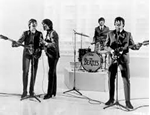
The Beatles have influenced many artists in every genre. While Dolly Parton came from a vastly different background than The Beatles, she was still struck by one of their earliest hits in America that left her “feelin’ all kinds of emotions.”
In the early 1960s, The Beatles became one of the biggest artists in the U.K. “She Loves You” and “Please Please Me” were two early singles that put the band on the map in their native country. In 1963, The Beatles finally began to take over in the U.S. with “I Want to Hold Your Hand.”
The single was released in the U.S. with “I Saw Her Standing There” as the B-side. Its success in the U.S. marked the beginning of the British Invasion as the track peaked at No. 1 on the Billboard Hot 100, becoming the first Beatles song to achieve this accomplishment in the U.S. The track gained even more momentum after The Beatles performed it on The Ed Sullivan Show in February 1964.
Source: Ross Tanenbaum/cheatsheet.com
details
Madonna’s success upset Paul McCartney. He discussed how television defined the perception of the Queen of Pop.
Madonna said The Beatles influenced her but she was more interested in other types of music.
Paul McCartney said he didn’t like when Madonna became a big star. Subsequently, he said she came across as a “goddess” to normal people. Notably, the Queen of Pop explained why she wasn’t too interested in The Beatles when she was young.According to the 2015 book Conversations with McCartney, the “Silly Love Songs” singer was upset by Madonna’s success. “It makes me realize how people are affected by media,” he said.
“While you’re looking at her, from your little lowly room, on your little telly, you think she’s a goddess,” he added. “You give her all of that. She doesn’t even ask for it.”
Paul discussed the Queen of Pop’s tours. “Once she’s on tour, she’s selling out 30,000, she’s a goddess,” Paul added. “‘Look at the clothes she wears. No wonder. It’s because she’s better than us. We are only mortal, we’ve got tellies, and I bet details

Ringo Starr has been performing on stage for over 60 years since he began his career with The Beatles. However, the British drummer said he still experiences stage fright, even if the fear disappears shortly after taking the stage.
Starr joined The Beatles in 1962 after the band struggled to find the perfect drummer. While still a pivotal member of the band, much of the attention was often on Paul McCartney and John Lennon as most of the songs were written and sung by them. When The Beatles ended in 1970, each member went in their own direction, including Starr.
After releasing several solo albums and songs, Starr formed the All-Starr band in 1989, who he continues to tour with today. However, unlike most bands, the All-Starr band consists of a constantly rotating set of musicians. In an interview with USA Today, the “Octopus Garden” singer explained why he decided to have a constantly changing band.
Source: Ross Tanenbaum/cheatsheet.com
details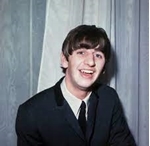
In 1964, The Beatles attended a party at the British Embassy in Washington D.C., and Ringo Starr left with less hair than when he entered. Despite the relative exclusivity of the party, fans there were still overzealous with the band. Starr explained that people began behaving badly after a couple of drinks. One fan even snipped the hair from his head.In 1964, the band brought Beatlemania to America with their performances on The Ed Sullivan Show. Shortly after, they traveled to the nation’s capital. After a show at the Washington Coliseum, they reluctantly agreed to attend a party at the British Embassy.“We always tried to get out of those crap things,” George Harrison said in the book The Beatles: The Authorized Biography by Hunter Davies. “But that time [in Washington] we got caught. They are always full of snobby people who really loathe our type, but want to see us because we’re rich and famous. It’s all hypocrisy. They were just trying to get publicity for the embassy.”
Source: Emma McKee/cheatsheet.com
details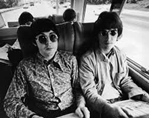
In 1958, years before Beatlemania or even minor local success, Paul McCartney and George Harrison went on a hitchhiking trip around Wales. McCartney liked taking his bandmates, Harrison and John Lennon, on trips like these. He and Harrison befriended a local family, but they took something from their home. Years later, McCartney received a letter about the theft and apologized.
Harrison and McCartney met on the bus to school and bonded over their love of music. They became close, and McCartney started taking his younger friend on hitchhiking trips.
“I often think of George because he was my little buddy,” he told The New York Times in 2020. “I was thinking the other day of my hitchhiking bursts. This was before the Beatles. I suddenly was keen on hitchhiking, so I sold this idea to George and then John.”
Source: Emma McKee/cheatsheet.com
details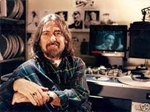
Though George Harrison is best known for his music, he also had a hand in many movies. With his production company, HandMade Films, Harrison helped revitalize the British film industry. He became disenchanted with the industry after a number of financial setbacks, but those who knew him say he really fell out of love with it after working on an early film for the company. The challenges of working with director Terry Gillam on Time Bandits wore on Harrison.The controversial religious subject matter of Monty Python’s Life of Brian caused the film’s first backer to pull out at the last minute. Harrison was friendly with members of Monty Python, so when Eric Idle asked him for help, he agreed.
Source: Emma McKee/cheatsheet.com
details
A star once said The Beatles’ “Love Me Do” was inspired by Big Mama Thornton’s “Hound Dog.” She also felt the song was inspired by Barrett Strong’s “Money (That’s What I Want).”
Paul McCartney and John Lennon discussed how the song came together.
A star once said The Beatles‘ “Love Me Do” was inspired by Big Mama Thornton’s “Hound Dog.” In addition, she felt the song was different from its inspirations. Notably, Paul McCartney and John Lennon both gave fans insight into the composition of “Love Me Do.”
Lulu is a singer known for her hits “To Sir with Love” and “Boom Bang-a-Bang,” as well as the title song from the James Bond movie The Man with the Golden Gun. During a 2022 interview with The Guardian, she discussed hearing “Love Me Do” when it was new.
“When I was 13, we were obsessed with the radio in the way kids now are obsessed with TikTok,” she recalled. “When ‘Love Me Do’ came on it blew my mind. My teenage hormones were raging, and The Beatles looked so cute, not at all threatening.”
Source: Matthew Trzcins details
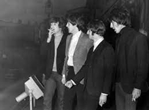
The Beatles performed to screaming fans in concert. You can see those fans in the audience of their Ed Sullivan Show performance too. Their first film, A Hard Day’s Night, showcased the fanfare that followed The Beatles even in their daily life. It also chronicled some of their bad habits, like smoking. The Criterion Collection edition of A Hard Day’s Night includes several documentaries about the making of the film. In one, producer Walter Shenson speaks about his efforts to stop The Beatles from smoking on film. He wasn’t entirely successful. A Hard Day’s Night came out in 1964. By this time, The Beatles’ following had crossed the pond, as it were, since they’d performed on Ed Sullivan at the beginning of the year. Shenson felt that The Beatles should be role models to their young fans.
Source: Fred Topel/cheatsheet.com
details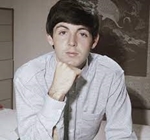
Paul McCartney felt The Beatles’ “Happiness Is a Warm Gun” was “very Lennon.” The song hit differently for him after John’s death.
George Harrison praised the song during one of its many, many studio takes.
Paul McCartney met with Linda McCartney the same night as the recording of The Beatles‘ “Happiness Is a Warm Gun.” Subsequently, he said he couldn’t listen to the song the same way after John Lennon’s tragic death. Giles Martin, the son of Beatles producer George Martin, gave fans some interesting insight into the track.
In the 1997 book Paul McCartney: Many Years From Now, Paul discussed one of the early times he met Linda. “I said, ‘Come on over, then,’ and she arrived the night when we were doing ‘Happiness Is a Warm Gun,'” he recalled. “She arrived at the house and phoned, and I had [The Beatles’ road manager] Mal [Evans] go round to check that she was all right.
“She remembers the fridge had half a bottle of sour milk and a crust of cheese, a real British fridge,” Paul added. “She just couldn’t believe the conditions I was living in.”
Source: Matt details

John Lennon compared Double Fantasy to Apocalypse Now and the soap opera Dallas. He said he didn’t know how the album ended.
Three of the songs from Double Fantasy became top 10 singles in the United Kingdom.
John Lennon compared Double Fantasy to Apocalypse Now. In addition, he compared it to the soap opera Dallas. Notably, the album in question includes three of the famous tracks from his solo career.
The book All We Are Saying: The Last Major Interview with John Lennon and Yoko Ono contains an interview from 1980. In it, John discussed his album Double Fantasy at length. For context, Double Fantasy is a collaboration between himself and Yoko, and both stars take the mic at different points in the record. He was asked if the album was very autobiographical.
“If you ask me that next year, I might have a different answer, but now I’ll say that it is completely autobiographical,” he said. “It’s about us over the last five or six years.”
Source: Matthew Trzcinski/cheatsheet.com
details
